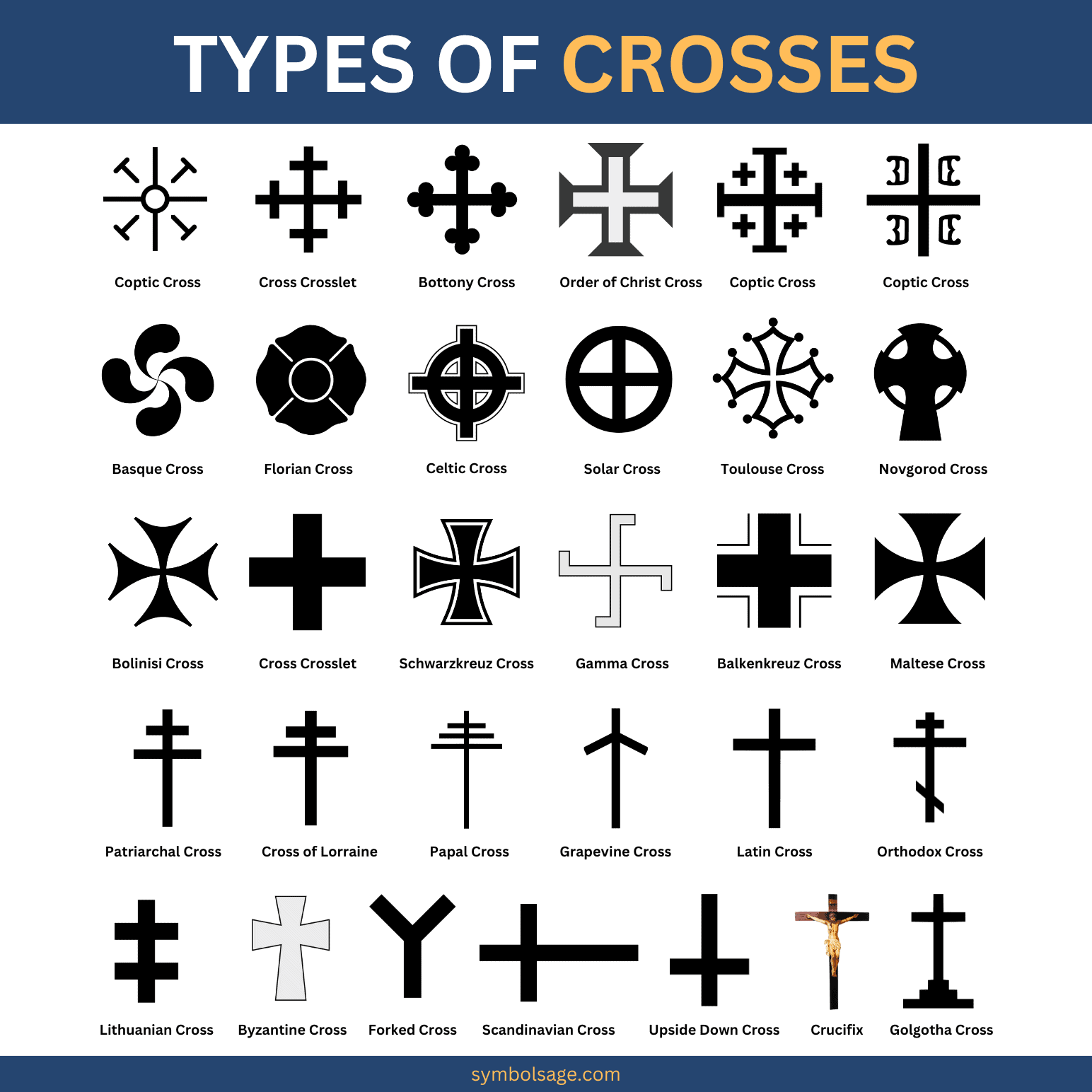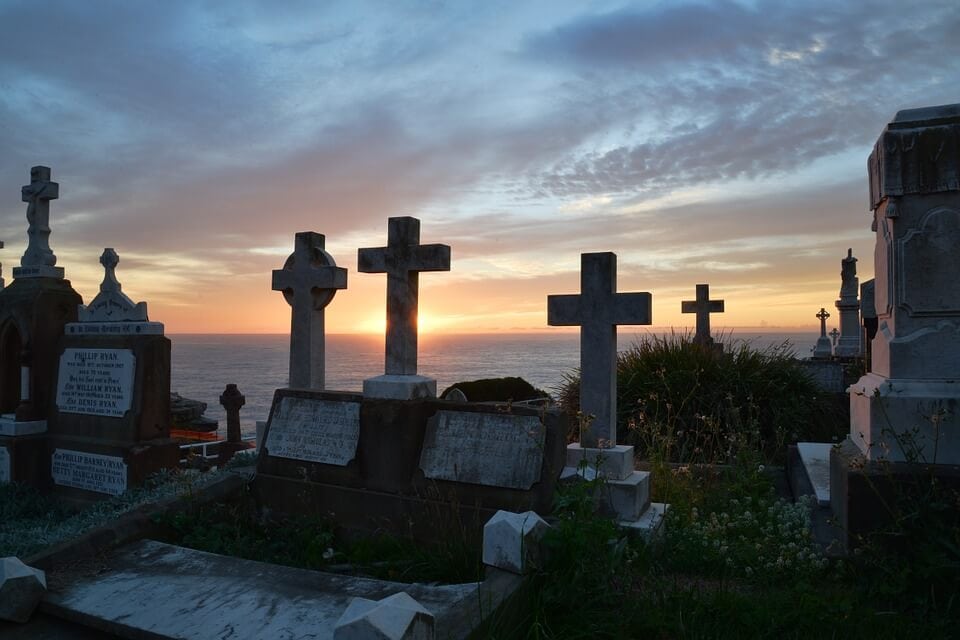
Table of Contents
When we say the word cross, we tend to think of one specific image – the Christian cross. However, the cross symbol has existed for thousands of years, with the oldest religious symbol believed to be the solar cross. This first cross may have then influenced all subsequent types of crosses.
Today, the cross is the most recognized symbol of Christianity and many variations of crosses have Christian associations. However, there are also secular meanings connected with types of crosses. With that said, here’s a look at popular types of crosses and what they symbolize.
1. Latin Cross

Other Names: Crux Immissa, Crux Ordinaria, Christian Cross, High Cross
The Latin Cross is the most recognizable symbol of Christianity and is representative of the cross upon which Jesus died. This type of cross has a vertical post with a crossbeam near the top.
The three upper arms are typical of the same length, but the topmost arm is sometimes depicted as being shorter.
Many believers keep this cross close as a symbol of their faith, generally wearing it in pendants or carrying it as a charm. It’s believed to bring peace, solace, and comfort to Christians.
2. Jerusalem Cross

Other Names: Five-Fold Cross, Cross and Crosslets, Crusaders Cross, Cantonese Cross
The Jerusalem cross features a central cross with equidistant arms and crossbars at the ends of each arm, with four smaller Greek crosses in each quadrant of the larger cross.
The design features five crosses in total. The Jerusalem cross was significant during the Crusades and was carried as a heraldic cross.
When Jerusalem, the Holy Land, was captured from the Moslems, the cross became the symbol of the Crusader state. It symbolizes the five wounds of Christ, the five main nations involved in the Crusades, and is a reminder of Christianity’s link to Jerusalem.
3. Forked Cross

Other Names: Thieves’ Cross, Robber’s Cross, Y-Cross, Furca, Ypsilon Cross, Crucifixus Dolorosus
The Forked Cross is a Y-shaped cross, with arms extending upwards. Some believe that thieves in Roman times were crucified on forked crosses, but there is no evidence to suggest this.
Also, constructing a forked cross takes more labor and expense. Many historians believe that the forked cross is a recent addition to the pantheon of crosses, emerging in the 1300s as a product of mysticism.
The forked cross was especially popular during the Middle Ages when there was a strong focus on the Passion of Christ.
Today, the forked cross is not as popular as it once was and isn’t commonly seen in Christian iconography.
4. Celtic Cross
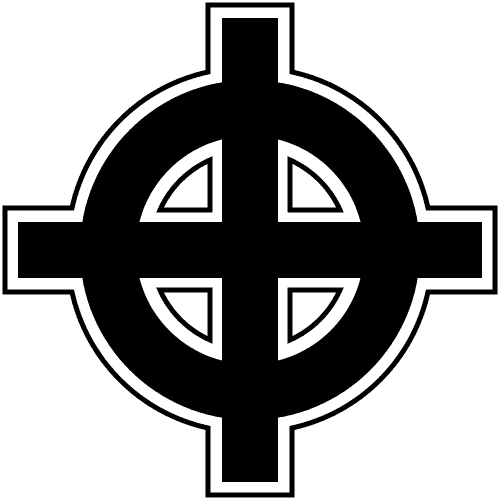
The Celtic cross features a cross within a circle, with the bottom arm extending below the circle. It’s commonly found in graveyards and public monuments and is seen as an emblem of Irish, Welsh and Scottish heritages.
The exact origins of the Celtic cross are unknown, but evidence suggests that it was in use before Christianity came to the region and has pagan associations.
It may have simply been adapted by missionaries to aid in their evangelizing efforts. The Celtic cross continues to be a popular variant of Christian crosses.
5. Solar Cross
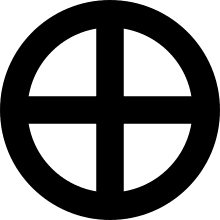
Other Names: Sun Cross, Sun Wheel, Wheel Cross
The solar cross is considered to be among the oldest religious symbols in the world, with some believing it to be the oldest. It has links to Indian, Native American, European, Middle Eastern, and Asian symbology, dating back to prehistoric times.
It has many meanings but is commonly associated with the sun and with ancient sun worship.
The design is simple, featuring an equidistant cross set within a circle. In this regard, it’s similar to the Celtic cross which is believed to have derived from the solar cross.
The difference is that the Celtic cross has a longer bottom post. The swastika is also a variation of the solar cross.
6. Papal Cross
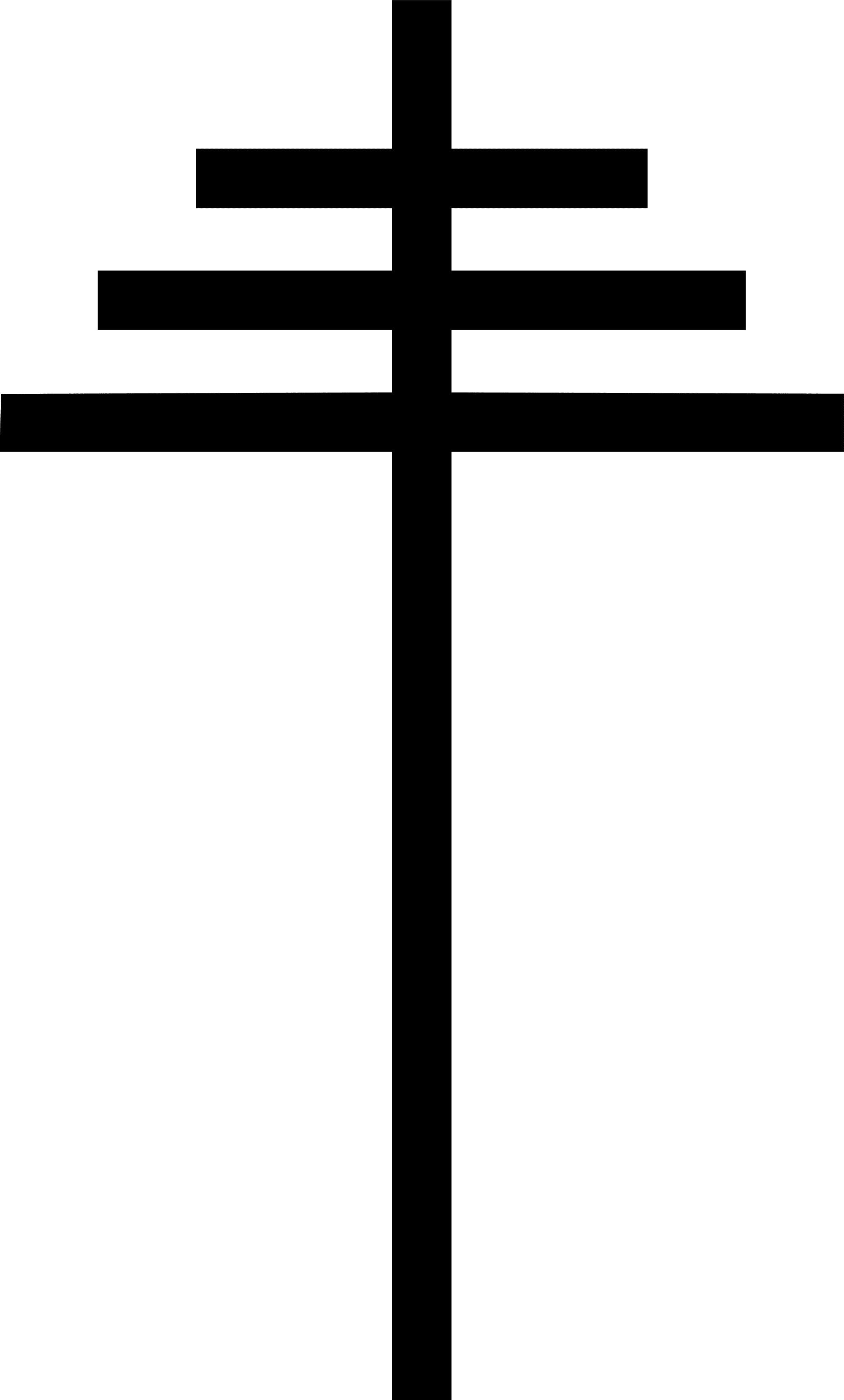
Other Names: Papal Staff
The Papal cross features three horizontal bars set on a long post, with the bars graduating in size towards the top. The cross is the official symbol for the office of the Pope and can only be carried and used by the Pope.
Many statues of Popes feature the Papal cross, as a symbol of their authority and status. This cross is similar to the patriarchal cross, which only has two horizontal beams.
The additional beam signifies the Pope’s higher ecclesiastical rank compared to an archbishop.
The three bars are said to signify the Holy Trinity, the three roles of the Pope, and the three theological virtues.
7. Patriarchal Cross

Other Names: Crux Gemina, Archiepiscopal Cross
This cross variant features two horizontal bars and is the official heraldic emblem of the archbishops of the Roman Catholic Church.
The exact symbolism of the two-barred cross is not clear, but some believe that the second bar signifies the plaque hung above Jesus when he was crucified, proclaiming who he was to all who watched.
Others believe that the patriarchal cross represents Jesus’ death and resurrection.
The Patriarchal cross is sometimes confused with the Cross of Lorraine, which is also a two-barred cross.
However, the original version of the Lorraine cross has a bottom arm that’s set much lower down on the vertical post, than the Patriarchal cross.
8. Maltese Cross

Other Names: Amalfi Cross
The Maltese cross has four v-shaped quadrilaterals that meet in the center, effectively creating a cross with 8 points. The overall shape looks similar to four arrows meeting in the center.
The symbol’s first notable use was during the Crusades and was the official emblem of the Knights Hospitallers. The latter was stationed on the island of Malta, which is where the cross’s name comes from.
Although the symbol was popular during the Middle Ages, evidence suggests that it existed as early as the 6th century in the Byzantine era.
The cross represents the 8 Langues (regions) from where the knights came. It can also represent the 8 beatitudes in the Bible.
More recently, the Maltese cross has been given a secular meaning, representing the 8 characteristics of a good first aider.
9. Florian Cross

Named after St. Florian, born in 250 A.D., the Florian cross is similar to the Maltese cross in design but is curvier and more flower-like overall.
It also has 8 points, but these look more like curved edges than points per se. The Florian cross is a common emblem of firefighting departments and symbolizes firefighters. The 8 points of the cross are believed to represent the virtues of knighthood.
10. Russian Orthodox Cross
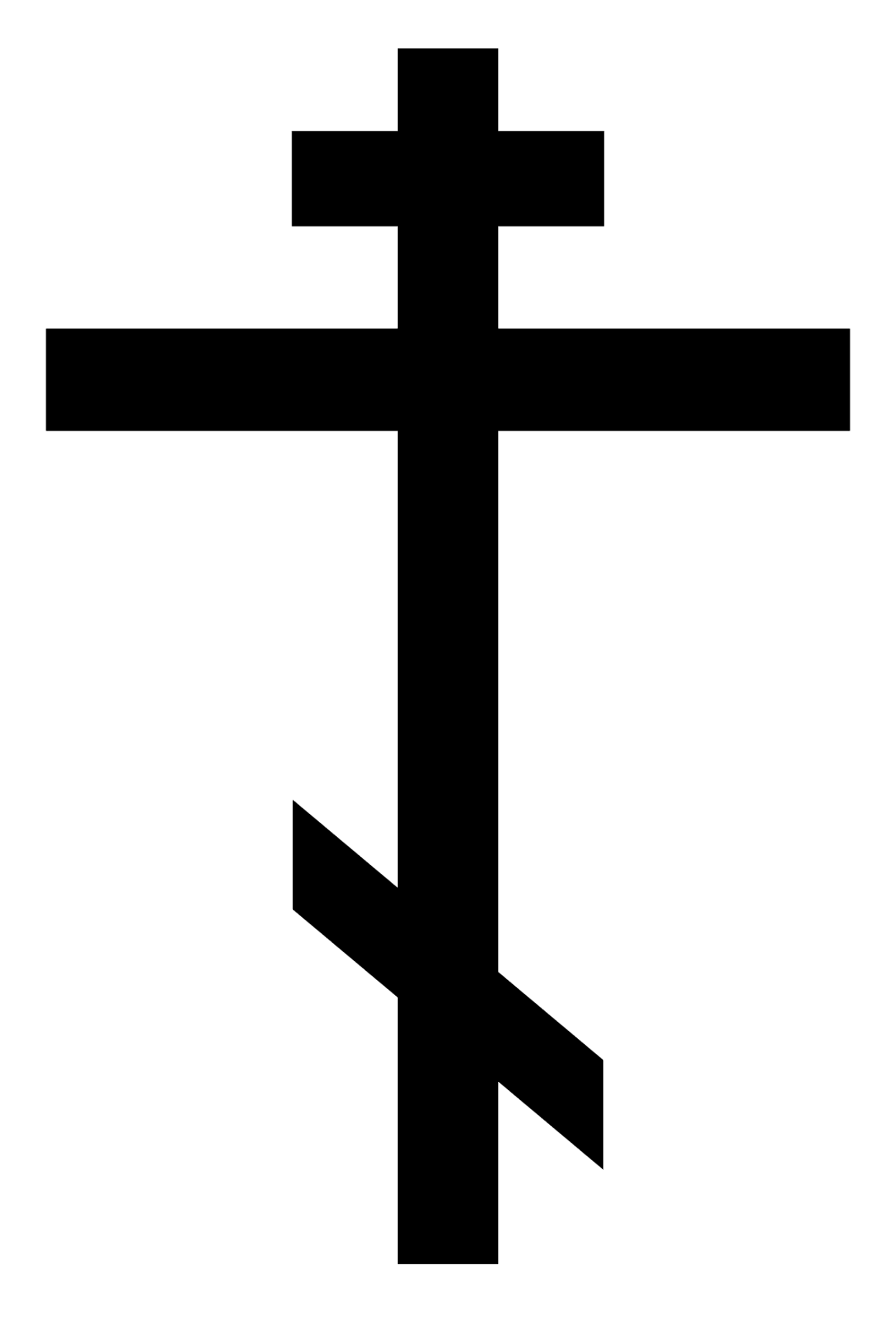
Other Names: Orthodox Cross, Russian Cross, Slavonic Cross, Suppedaneum Cross
The Russian Orthodox Cross is very similar to the Patriarchal Cross but has an extra slanted crossbeam near the bottom of the cross.
This lower bar represents a footrest that Jesus’ feet were nailed to when he hung on the cross, while the uppermost bar represents his head. The middle crossbeam represents his outstretched hands.
This variation of the cross is commonly used in the Russian Orthodox church.
11. Greek Cross
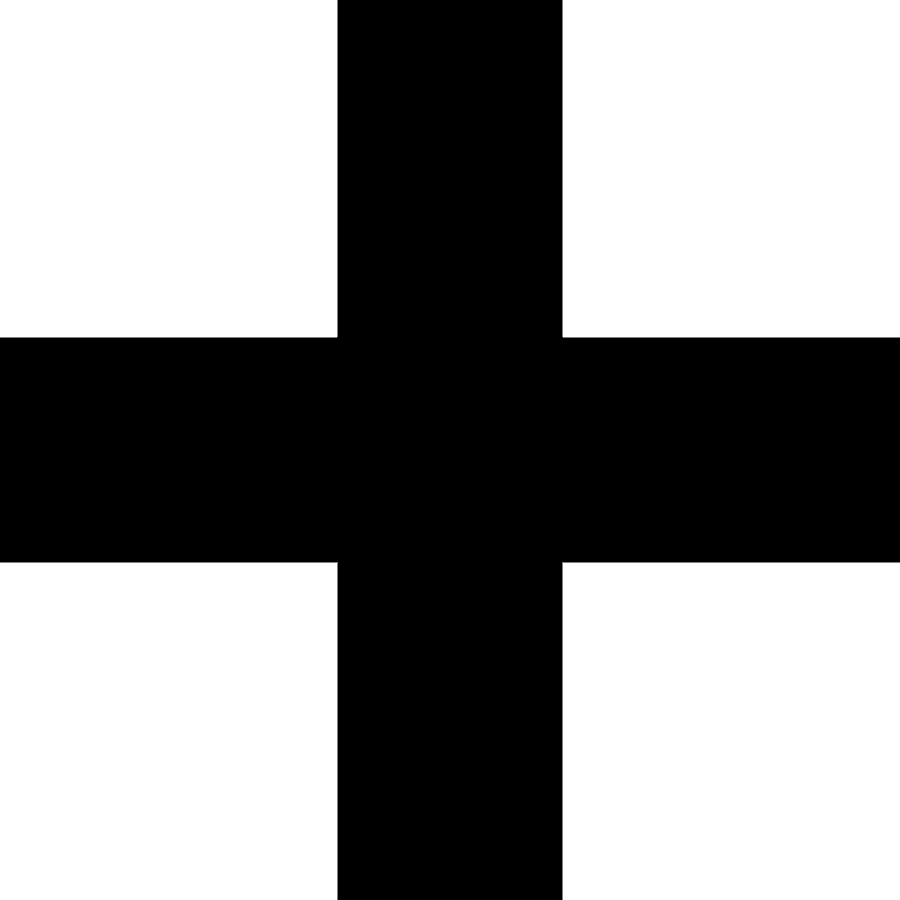
Other Names: Crux Immissa Quadrata
The Greek Cross has arms of equal lengths, not much longer than its width. It’s a stocky, compact-looking cross and is the same design used in the symbol of the Red Cross.
Before Christianity, the Greek Cross was used as a decorative motif, often featured in architecture, clothing, buildings, and accessories.
The symbol held sacred meaning for Pythagoreans, who took their vows on it. It was also used by Egyptians in decorations.
Today, the Greek Cross is associated with the Eastern Orthodox Church and with Early Christianity.
12. Cross of Lorraine

Other Names: Cross of Anjou
The Cross of Lorraine is a heraldic cross featuring two crossbeams. It’s similar to the Patriarchal cross, but it’s typically featured with the lower crossbeam set further down the vertical post.
The cross is the emblem of Lorraine in eastern France, which was captured by the Germans along with Alsace.
The Cross of Lorraine represents the French struggle against German forces, and more universally, is a symbol of resistance against evil forces.
13. Crucifix
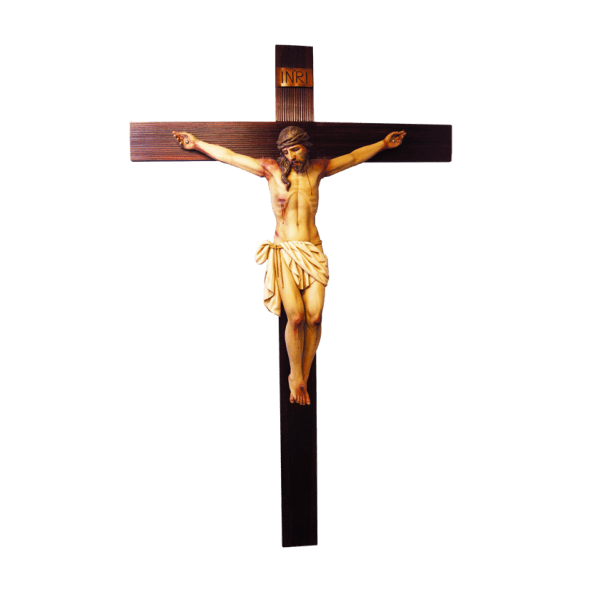
A crucifix is a cross with the figure of Jesus depicted upon it. Many Roman Catholics prefer crucifixes over crosses, as it is a reminder of Jesus’ suffering on the cross.
However, Protestants tend to prefer crosses, as an indication that Jesus is no longer suffering and has overcome the cross.
Crucifixes in the West typically feature a 3-dimensional image of Christ, whereas, in Eastern Orthodoxy, the image of Christ is simply painted onto the cross.
14. Tau Cross

Other Names: Cross of St. Francis, Crux Commissa, Anticipatory Cross, Old Testament Cross, Cross of St. Anthony, Franciscan Tau Cross
The Tau cross is so called because it resembles the Greek letter tau in upper-case form. It basically looks like a letter T, with the horizontal arms slightly flaring out towards the ends.
While the Tau cross is associated with Christianity, it existed long before Christianity and held significance to pagan groups.
Today, the Tau cross is commonly associated with St. Francis, as he chose this cross to be his emblem, even using it as his signature.
Tau crosses are typically carved out of wood to represent its symbolism of humility, piety, flexibility, and simplicity. It’s one of the most beloved and popular types of the Christian cross.
15. Upside Down Cross

Other Names: Cross of St. Peter, Petrine Cross
The Upside-Down Cross is an inverted Latin cross and is associated with the crucifixion of St. Peter the Apostle.
Accordingly, Peter requested to be crucified upside down, as he did not feel worthy of being crucified in the same way as Jesus.
In modern times, the Petrine cross is sometimes viewed as an anti-Christian symbol, which has somewhat tainted the symbolism of the cross.
16. Ankh
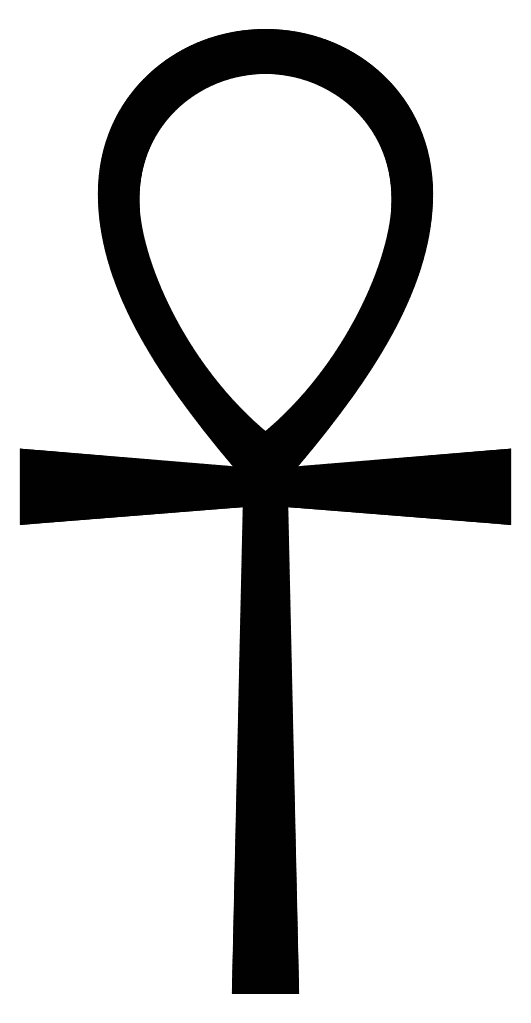
Unlike many of the crosses on this list, the Ankh is directly connected to ancient Egypt rather than to Christianity.
While it was used in Christian contexts and possibly adapted by early missionaries to assist in their evangelizing efforts, the Ankh remains a predominantly Egyptian symbol.
The Ankh features a cross with a loop at the top, instead of the topmost arm. It was a popular hieroglyph and was used to symbolize the concept of life.
It’s also believed to symbolize eternal life, life after death, and the divine right to rule. The most common portrayal of the Ankh is as an offering from an Egyptian deity to a pharaoh.
17. Gamma cross
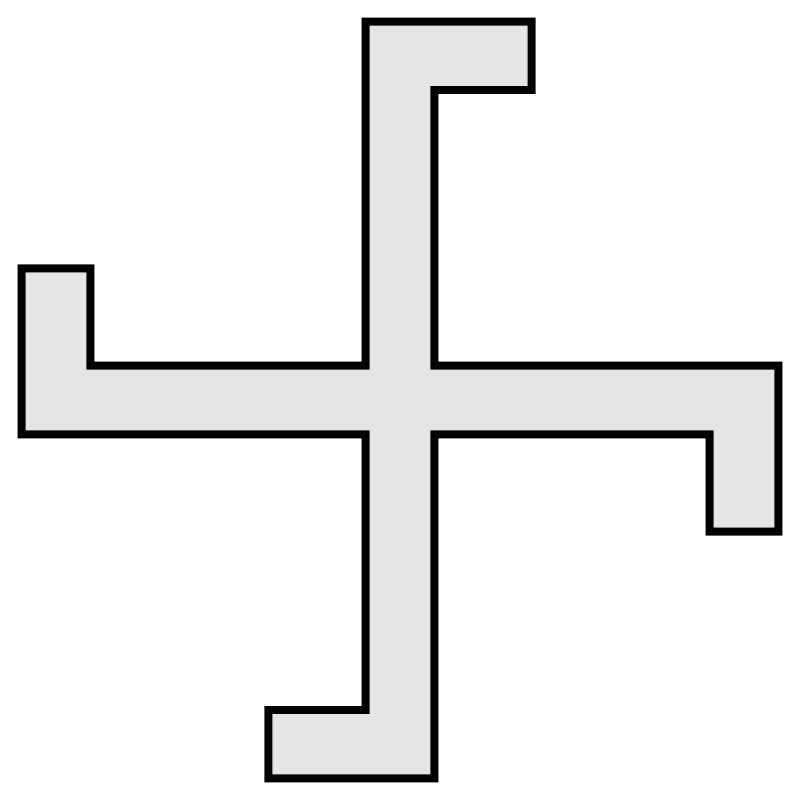
Other Names: Gammadion Cross
This cross design was derived using four uppercase Gamma letters from the Greek alphabet. It features four arms with perpendicular extensions moving in a clockwise fashion.
A handful of variations exist, with one being the infamous swastika. Another variation is the fylfot cross, which is the mirror image of the gamma cross.
In Christian tradition, the four arms represent the four evangelists. However, this cross pre-dates Christianity and can be traced back to medieval Anglo-Saxon culture.
18. Coptic cross

Other names: Ethiopian Cross, Axum Cross
Often found with the “Crux Ansata”, the Coptic cross is said to be inspired by the famous Egyptian symbol, the Ankh. It was used by the Coptic Orthodox, which was the Egyptian Church established by St. Mark.
The cross features two thick lines that intersect in the middle, creating four equidistant arms. Each line ends in three points, representing the Holy Trinity. In total, the cross has 12 points, which represent the 12 apostles.
19. Golgotha Cross
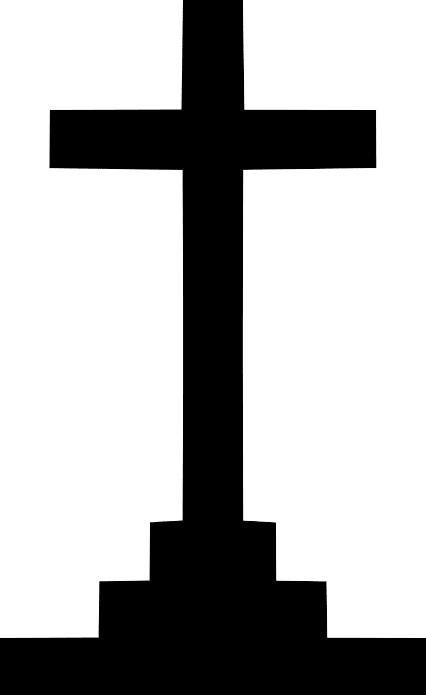
Other Names: Cross of Golgotha, Calvary Cross
Memorializing the site of Christ’s crucifixion, the Golgotha cross is a heavily detailed symbol. It has three main sections.
The base represents Calvary (sometimes called Golgotha), also known as the hill of the skull. On the left, there is a spear, representing the spear of Longinus which was used to pierce Jesus.
On the right-hand side is another spear, this one representing the spear with a soaked sponge that was used to give Jesus water.
20. Bolnisi cross

The Bolnisi cross is the oldest Christian cross found in Georgia. It’s an equal-armed cross, where ends start widening as they move away from the center.
This cross has served as the inspiration for the Templar’s Cross and the Iron Cross of the German military. It’s a variant of the Cross pattee.
21. Schwarzkreuz cross
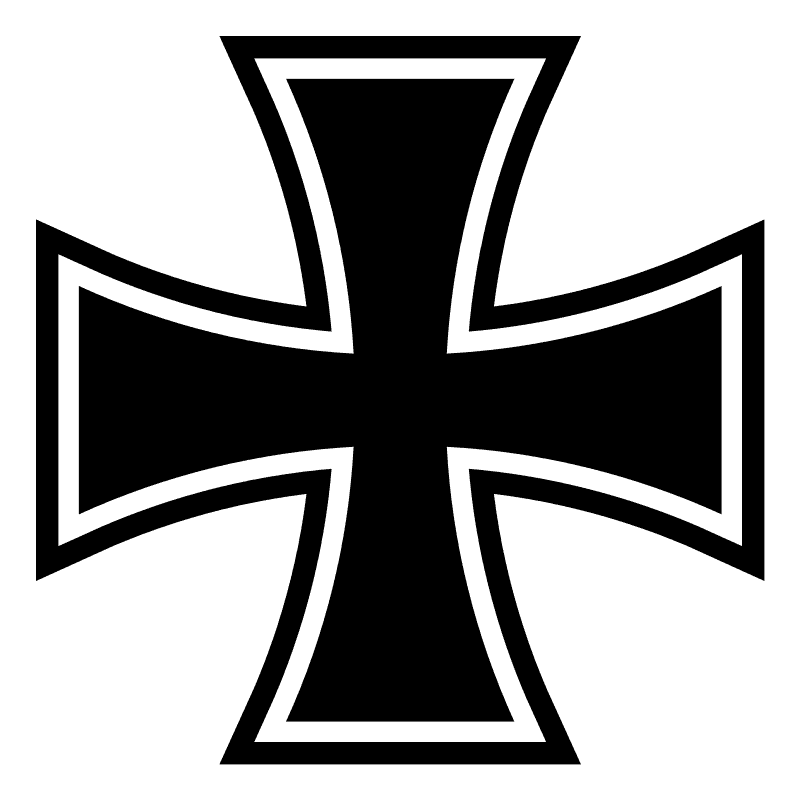
Other names: Iron Cross
Also referred to as the Iron Cross, the Schwarzkreuz has become a popular symbol ever since it was used by the German military, specifically during the reign of Adolf Hitler. The cross is said to be derived from either the Bolnisi Cross or the Teutonic Order. It wasn’t used in religious contexts, but rather as a military decoration.
22. Balkenkreuz cross
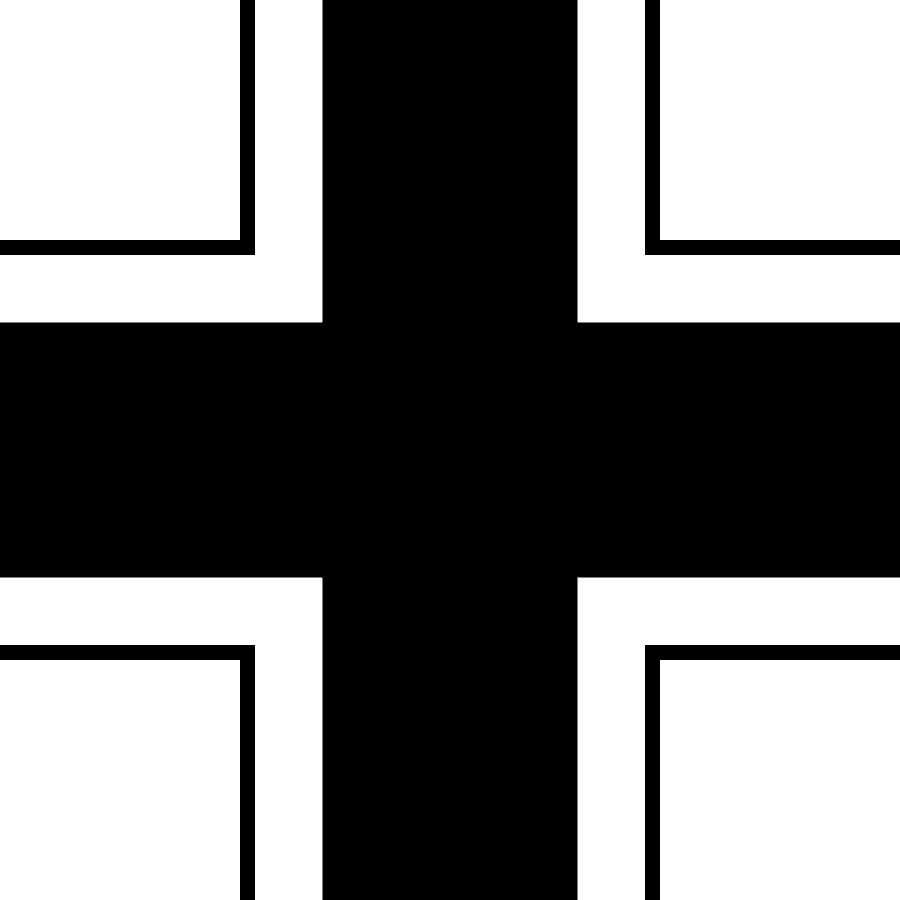
The Balkenkreuz, meaning beam cross or bar cross, is a variation of the Iron Cross. It originated during the First World War as a symbol to identify German combat vehicles and infantry.
In most depictions, it’s an equidistant cross with a silver (or white) outline between the arms (four quarters).
23. Toulouse cross

Other Names: Occitan Cross, Cross of Languedoc, Cross of Occitania
Depicted as a variant of the Bolnisi Cross, this Toulouse Cross was initially identified as the symbol in the Occitanian flag (a region in southern France). The cross features four equidistant arms, each ending in a wide three-pointed design. At the tip of each point are three clearly defined dots.
Although not rooted in Christianity, many speculate that the twelve studs may represent the twelve apostles.
24. Scandinavian cross
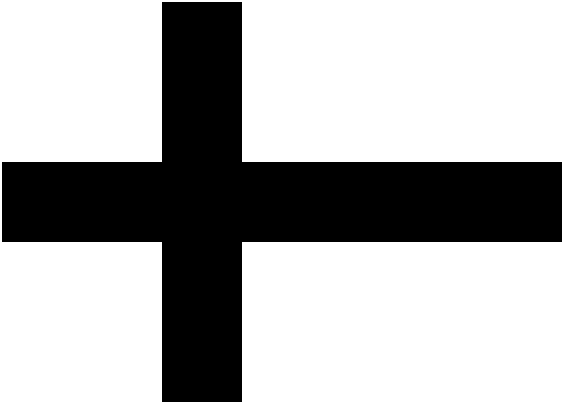
The Scandinavian Cross is a familiar symbol adopted in the flags of countries belonging to the Nordic region. This “sideways cross” was used by the Kalmar Union during the time in which they managed to assimilate regions of Denmark, Sweden, Norway, and Finland. The Scandinavian cross represents Christianity. The first use of the flag was in the national flag of Denmark in the 13th century.
25. Byzantine cross
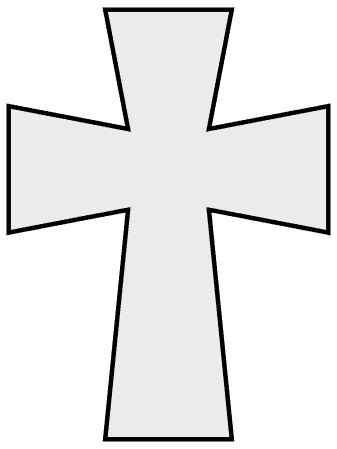
Other names: Slavonic cross, Russian Orthodox Cross, Orthodox Cross
This cross features double crossbeams at the top and one slanted crossbeam at the bottom. The slanted footboard is open to various interpretations.
Some say that the footboard represents the burden or unburdening of believers and nonbelievers, whereas others claim that it signifies the extent of Christ’s suffering.
The Byzantine cross is a prominent symbol in East European Orthodox traditions. It can be found on many Russian symbols, including military banners and coat of arms.
26. Lithuanian cross

First discovered on a knight’s shield in 1386, the Lithuanian cross (also called the double cross) features two equidistant crosses sharing the same vertical arm.
Before being adopted by the Lithuanian government, the symbol was said to be the coat of arms for King Jogaila of Poland.
27. St. James cross

Other names: Cross of St. James, Santiago Cross, Cruz espada
Depicted as a sword with a fleur-de-lis crafted in the hilt, the St James Cross stands as a testament to the might of the patron saint James.
Originating in Galicia, a region in Northwestern Spain where St. James is said to be buried, this cross also represents pilgrimage and the act of planting a cross in the ground so one could pray during their travels.
The Cross of St. James is also used in heraldry, where it’s also called the Santiago cross or the cruz espada (in English, the sword cross). It’s a cross fleury, i.e., a cross with a flowery design, often used in heraldry.
28. Order of Christ cross

Other names: Cross of Christ, Portuguese Cross, Cross of the Order of Christ
Likened to an Iron Cross or Maltese Cross, the Order of Christ Cross is depicted as a voided Greek cross with a sharper Cross pattée.
It was considered a recurring symbol in the Portuguese navy and was said to be derived from the Knight’s Templars branch of Portugal.
29. Grapevine cross

Other names: Georgian Cross, St Nino’s Cross
With slanted cross-arms that sag down from their regular upright position, the Grapevine cross represents St.Nino and her journey of preaching Christianity to the region of Iberia (currently parts of Georgia).
It’s a major symbol in the Georgian Orthodox traditions and was also said to be a gift to St. Nino by the Virgin Mary.
30. Basque cross

Other names: Lauburu
Recognized as a swirly swastika with rounded ends (and sometimes enclosed in a circle), the Basque Cross is said to represent the Sun and the personality of the Basque people (a region in the North of Spain).
Also referred to as the “Lauburu”, it was initially introduced by the Celts during 200 B.C. and was later adopted by the Basque people and various cultures around the world. It’s been used on tombs as a decorative element.
31. Serbian cross

With four firesteels or Beta symbols depicted in the four quarters, the Serbian Cross is open to many interpretations.
However, it’s mostly associated with the concept of illumination and the glory of God. The symbol is heavily used in the Serbian national flag, coat of arms, and orthodox church.
32. Novgorod cross

The Novogorod Cross features a cross enclosed in a circle. Although it can be mistaken for the Celtic Cross, there’s little evidence to support this.
Novgorod was considered an independent state that went unconquered until the 15th century.
33. Bottony cross

This is a more stylized variation of the cross crosslet, which features four smaller crosses that share the same base and extend at right angles to each other.
The Bottoni Cross was a common symbol used in insignias, coat-of-arms and other forms of heraldry. Unlike the typical cross crosslet, the Bottoni cross has all the ends rounded off to represent semi-circles.
34. Cross Crosslet

This is a heraldic cross made by joining four Latin crosses at the center. Each cross emanating from the center represents one of the four evangelists – Matthew, Mark, Luke and John. By combining the four crosses, there’s also a fifth cross at the center.
The origins of the cross crosslet are unknown but the oldest known use can be traced back to 1404 in Poland.
Wrapping Up
The above cross variations are among the most popular, but this is by no means an exhaustive list. There are many more types of crosses, but most are associated with Christianity.
Cross symbolism continues to be highly significant to religious and secular groups and can be found everywhere.
Similar Articles:
What is the Iron Cross Symbol and Is It a Hate Symbol?
What Is the Coptic Cross? – History and Meaning
What Is the Cross Pattée? – History and Meaning
The Rose Cross: History and Symbolism
